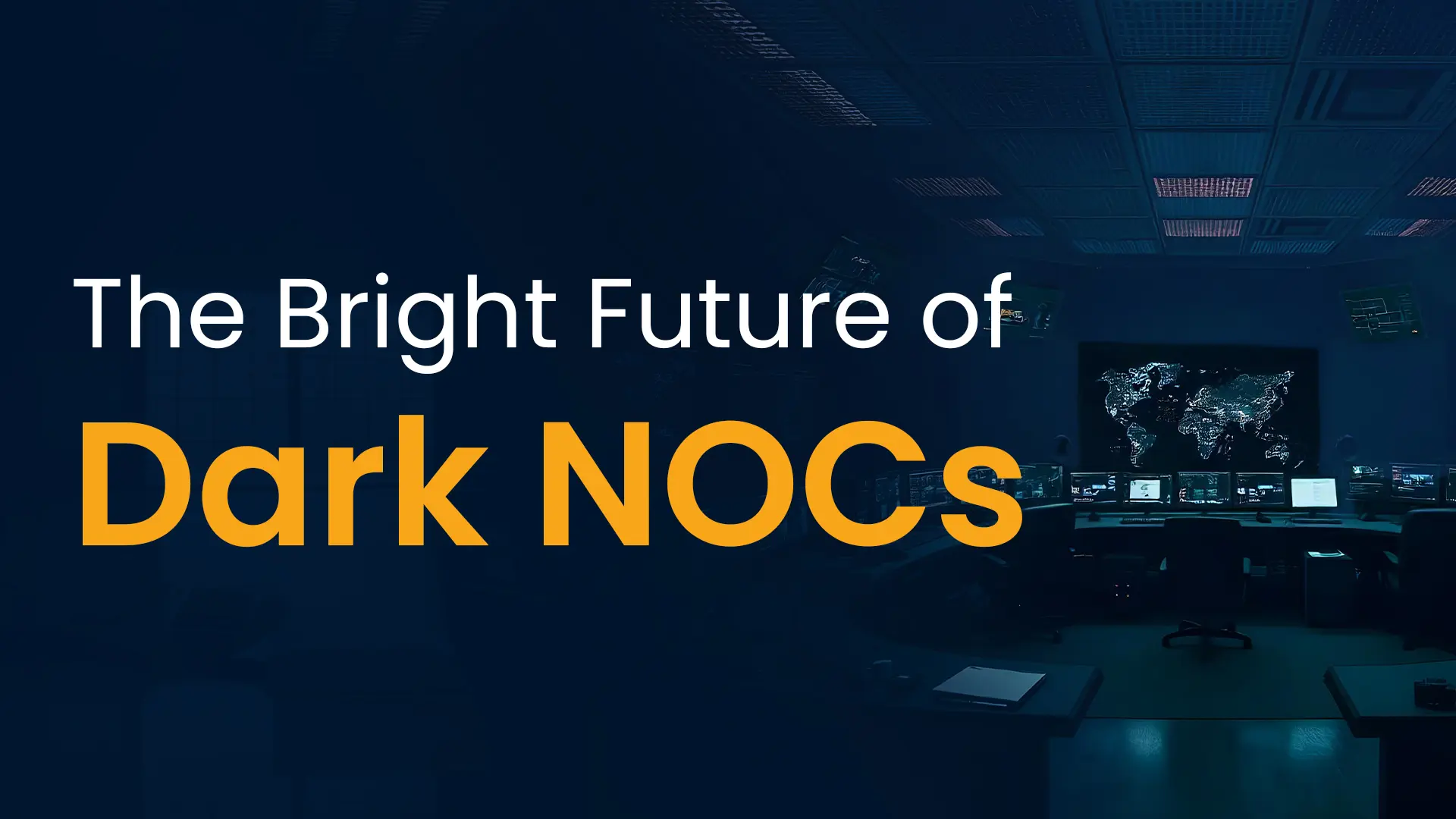The world has become more digitalized than ever before. Industry 4.0 was well on its way even before the COVID-19 pandemic started. The lockdowns and work-from-home mandates associated with the pandemic gave digitization a turbo-boost. More and more customers now prefer to engage with enterprises in a digital model only. Artificial Intelligence, automation, and machine learning have become commonplace.
In such a digital-first world, enterprises have no option but to accelerate their tech adoption. But they face multiple roadblocks including disruption of existing models and the need for speed in an increasingly fluid business environment. Global Capability Centers (GCC) have become a key enabler for overcoming these challenges and accelerating tech adoption in enterprises.
Here’s how.
1. GCC helps enterprises become digitally ready
GCCs were primarily outsourcing hubs that focused on IT shared services support. GCCs supported their parent companies’ HR, procurement, finance, operations, and other processes.
Today, GCCs have evolved to become strategic, semi-autonomous partners of their parent enterprises. GCCs help parent companies adopt the latest technology initiatives and drive innovation.
Many enterprises rely on GCCs to host database and servers, and run applications. Today, GCC service providers in India support their parent companies to overcome the challenges of the post-COVID business landscape in the following ways:
- Spot early trends and conceptualize new services. The resilience and adaptive nature of GCCs make these centers ideal for catering to the uncertain business environment of the post-pandemic world. GCCs can make quick iterations on new product and service development.
- Run critical processes. GCCs host and orchestrate the complex infrastructure needed to run critical processes, such as supply chain. Running such processes from captive GCCs enable the parent company to focus on core business activity without being distracted by the enabling processes.
- Offer remote support. Increased digitalization translates to lesser physical footprint. Businesses now convert their working spaces into collaboration hubs. GCCs provide back office support to power such collaboration hubs and hot-desking. The remote support offered by GCCs became invaluable as stay-at-home orders shut employees out of their office in most parts of the world. With hybrid work environment now fast becoming the norm, GCCs continue to offer critical remote support to the parent company.
GCCs have always delivered cost savings. Enterprises set up GCCs as cost arbitrage centers, to access and run processes at a much lower cost. The enhanced role of GCC as tech enablers and innovation hubs offers additional advantages. GCCs now maximize efficiency, and unlock new business possibilities for the enterprise.
Pharma giant GSKs GCC hub in Bengaluru focuses on research and development. The center leverages path-breaking knowledge in genetics and advanced technologies to support research and development. The hub focuses on developing an innovative portfolio of consumer-preferred and expert-recommended healthcare brands.
2. Catalyzing digital transformation
GCCs enable parent companies to re-engineer their operational models and help adopt the latest digital technology.
Enterprises rely on GCCs to run virtual-connect and collaboration platforms, undertake cognitive automation, develop Artificial Intelligence models, unlock IoT possibilities, roll out predictive analytics, implement blockchain, and adopt other cutting-edge digital technology.
Enterprises facilitating the post-pandemic hybrid work culture require scalable digital systems purpose-built for distributed workforces. Such systems make the enterprise agile, resilient, and flexible to function normally despite adverse external events. Achieving such a state requires digital transformation. And digital transformation is easier said than done.

Many GCCs lead the digital transformation initiatives for their parent companies. These remote digital transformation hubs provide the parent company with strategic technical talent and resources to enable rapid growth and operational excellence in a sustainable manner.
Over the last few years, several global MNCs have set up captive GCC centers in India. Most of these centers now help their enterprises drive digital transformation and innovation. 7-Eleven’s new global tech center in Bengaluru will drive the company’s digital transformation programs. The company has positioned its Bengaluru center as an extension of its core tech team based in Dallas. 3M, the American conglomerate, has likewise added a new technology center in Bengaluru, with a specific focus on accelerating digital transformation at scale. The new hub will have advanced capabilities that combine material and digital sciences and solve customer challenges.
3. Implementing Artificial Intelligence and Machine Learning models
Artificial Intelligence models are inherently disruptive and fraught with risk. About 95% of the AI models fail when implemented in real-world settings. The high failure rate is due to the complexities encountered during scale-up from proof-of-concept to real world settings. Often, the model does not factor in all the eventualities that crop up in real world.
GCCs help enterprises overcome such hurdles and roll out AI models in a risk-free environment. GCCs also nurture and enrich the enterprise innovation ecosystem.
GCCs in India offer viable incubation centers to test and run Artificial Intelligence models. Enterprises may develop proof-of-concepts and test the waters using GCCs, before adopting the models in real-world settings. Experimenting with a new AI model with the GCC as the base does not disrupt the business operations taking place at the head office.
Data scientists at GCCs can create, develop and train algorithms that:
- Refine the product delivery cycle, and develop more cutting-edge market-ready products.
- Drive process efficiency by deploying RPA and cognitive automation capabilities.
- Analyze the financial performance of company and recommend actions to boost profitability.
- Analyze data on a 360-degree perspective, by combining statistical analysis and machine learning techniques to identify key market and consumer trends.
- Segment customers, and correlate customer sentiments with pricing elasticity, trends, and other variables, to develop pricing and other frameworks.
- Deliver product-based innovation, for competitive differentiation.
Sabre offers a good case study on how GCCs helps the parent companies accelerate tech adoption, especially Artificial Intelligence technology. Sabre’s GCC in Bengaluru develops algorithms that solve business scenarios and unlock value. The team develops advanced algorithms for statistical and econometric analysis, big data analytics, and other high-end processes, to solve challenging business problems.
Some of the specific use cases include:
- Applying Artificial Intelligence and Machine Learning models to enable live experimentation in pricing.
- Analyzing behavioral insights of travelers, to understand customers better, and enable personalized engagement.
- Engaging with customers on multiple touchpoints.
- Building learning models for ticket and ancillary sales, dynamic pricing models, and action plans for airlines to improve sales
Other big names such as Lululemon, Giant Eagle, Goldman Sachs, and others have also set up GCCs in Bengaluru. These hubs facilitate technology innovation, leadership, and business development. They expand the company’s expertise in data, analytics, platform engineering, merchandising, and QA.
4. Resolving HR issues
The skills shortage plaguing industries for over a decade has grown more acute post-COVID. The pace of change keeps overriding the pace of learning. Side-by-side, the shelf-life of technical skills is fast depleting. The ecosystem supports relearning and upskilling, but busy and harried executives rarely have the time to commit to the same. There is a scramble to access talent, and skill-shortage has resulted in many companies being unable to go in for digital transformation or adopt new technology. The skill shortage has also escalated HR costs, making many projects unviable financially.
A recent World Economic Forum report estimates that automation will replace 85 million jobs worldwide by 2025. About 97 million new tech-based jobs will also emerge, focused on data analytics and process automation. The digital skill gap that exists today will deepen further.
GCCs help enterprises mitigate the talent crunch, and roll out new technology in a cost-effective way.
GCCs leverage local capabilities and talent to roll out innovative and cutting-edge products. GCCs attract rich talent pool at much lower rates compared to accessing the same talent at home location.
GCCs can hire and reskill their workforce with niche skills in Artificial Intelligence, Machine Learning, Natural Language Processing, Blockchain, data analytics, and other emerging technologies. They focus on:
- Lateral and campus hiring to expand their talent pool.
- Checking attrition of skilled employees by reviewing and redefining their Employee Value propositions (EVP). GCCs augment EVPs across the four critical areas of organizational culture, nature of work, career growth and compensation.
- Building hybrid skills capabilities and creating a continuous learning culture to keep pace with the changes. New-age skills are not only limited to the technical domain. It entails a mix of creativity, analytical, critical thinking, and problem-solving skills.
5. Developing a collaborative ecosystem
Enterprise ecosystems are increasingly becoming collaborative. The rapid pace of tech advances and the fragmentation of digital platforms make it unviable for enterprises to do everything in-house. Retaining talent for all possible skills is impractical and costly. Successful enterprises curate an ecosystem of skills and talent. GCCs constitute an important node in curating such an ecosystem.
As a case in point, Ikea’s GCC center in Bengaluru is part of a global network of remote centers that include hubs in Poznan (Poland), Shanghai (China), and Baltimore (USA). The Bengaluru center will be the focal point and hub for digital innovation.
GCC service providers can –
- Actualize virtual-connect for the enterprise ecosystem. The GCC becomes the focal point of connectivity or a remote operational nerve center that connects the resources dispersed around different geographical areas.
- Leverage the robust IT infrastructure available at Indian cities and the high level of technical competencies among the workforce in their catchment area to deliver high-quality services to their patent company.
- Participate in the industry actively, and establish thought leadership. Top executives working in GCCs engage with the academia, participate in trade forums, and other avenues, to exchange ideas, disseminate information, and set up informal collaboration channels. Such connections become handy for resolving issues, especially when adopting open-source technology. It also gives the enterprise a head start when the academia or other entity makes technological and intellectual advances.
- Leverage local connections to team up with start-ups that offer niche services in specific domains. Several start-ups have domain expertise, but lack the support needed to realize the full potential of their products. GCCs help start-ups piggyback on the strength of their parent company.
In India, 300+ start-ups, engaged as vendors, generated USD 15 million+ in revenue primarily from GCCs. Indian start-ups also secured USD 8 million in funding through GCC accelerator programs.
6. Fortifying security
Data breaches subvert even the most robust of networks. Countless companies have lost personal identifiable information and other sensitive data to hackers. They end up paying backbreaking ransomware or regulatory fines. Many companies never recover from the erosion of customer confidence following such breaches. These threats will increase in the post-pandemic world, following the uptake in increased digital transformation initiatives and hybrid working models.

Today’s complex enterprise networks feature advanced technologies such as IoT, edge computing, and industrial control systems. Even enterprises with simple business workflows will end up with a complex network if they adopt a multi-cloud strategy.
GCCs ramp up their cyber security approaches to stay ahead of such threats. They remain in prime position to orchestrate robust threat detection and response capabilities, and make timely responses, using the latest tools.
Effective cybersecurity depends on timely extrapolation, detection, and response. GCCs work to ensure robust IT governance, including cyber security reviews and compliance initiatives to boost security.
- Deploy the latest threat identification and mitigation strategies such as zero trust architecture and comprehensive identity management.
- Apply intelligent automation and standardization initiatives to strengthen the enterprise architecture, including embedding security into enterprise workflows and adopting approaches such as “security and safety by design.”
- Experiment with innovative new technology such as blockchain to make their process more robust and transparent. Process transparency improves collaboration.
- Keep abreast of the latest technology trends, assess its viability for the enterprise, and adapt it if feasible. The GCCs helps the parent company incubate the new security technology and scale it up, before applying it across the enterprise.
7. Legal and Regulatory compliance
Hardware and software constitute only one dimension of any technology adoption. Successful tech adoption depends on getting the “soft” part of the rollout right. The soft part mainly constitutes legal and regulatory compliance.
GCCs can
- Host private clouds of the parent company, to comply with data sovereignty laws.
- Connect with freelancers and independent contractors within the frameworks of the local laws.
- Orchestrate partner contracts, compliance audits, and other legal and regulatory interventions of the parent company, to accelerate new tech adoption.
Conclusion:
The global GCC market is about US$ 40 billion, which constitutes 25% of the global offshore services market. 27% of the US based Global 2000 firms have a GCC already set up in India. India has 1300+ GCCs, employing a workforce of more than 1.3 million, and generating USD 33.8 billion of gross revenue.
Relying on GCCs will be critical for enterprises to stay competitive in the post-pandemic decade. GCC service providers in India have overcome the COVID-19 induced slump and regained its growth trajectory. At last count, around 500+ global companies are preparing to launch captive centers in India by 2025.




